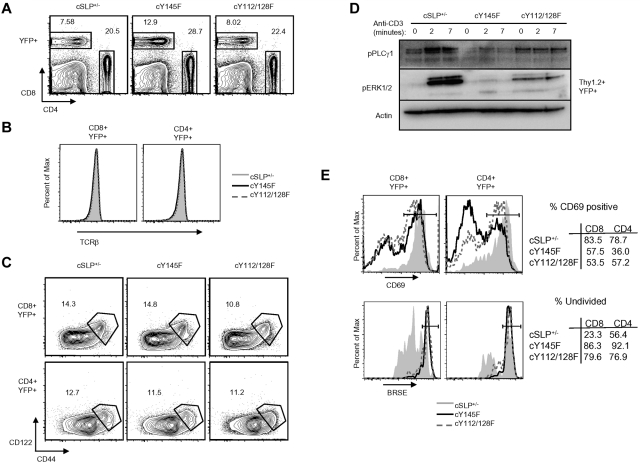Figure 3.
Conditional SLP-76 KI T cells show defects in TCR induced proximal signal transduction and functional responses in vitro. (A) Contour plots display CD4 and CD8 surface expression on YFP+ splenocytes from tamoxifen-treated cSLP-76+/−, cY145F, and cY112/128F mice (n > 5). (B) Surface expression of TCRβ on CD4+YFP+ and CD8+YFP+ gated splenocytes from cSLP-76+/−, cY145F, and cY112/128F mice (n = 5-7). (C) Contour plots show surface expression of CD44 and CD122 on CD4+YFP+ and CD8+YFP+ splenocytes from cSLP-76+/−, cY145, and cY112/128F mice. Numbers represent the percentage of cells in each gate. (D) YFP+ T cells from cSLP-76+/−, cY145, and cY112/128F mice were stimulated with anti-CD3 for the indicated times, lysed, and probed by Western blot with the indicated antibodies (n = 2). (E) CD69 up-regulation (top panel, n = 5-7) and BRSE dilution (bottom panel, n = 3-5) in splenocytes from cSLP+/−, cY145F, and cY112/128F mice were measured by flow cytometry following overnight and 72 hours stimulation with anti-CD3, respectively. Histograms are gated on CD8+YFP+ and CD4+YFP+ lymphocytes. Numbers in the tables represent frequency of cells within the gates depicted in the histograms. Significant P values, when present comparing KI to WT are indicated by asterisks: ***P < .001, **P = .001-.01, *P = .01-.05.

